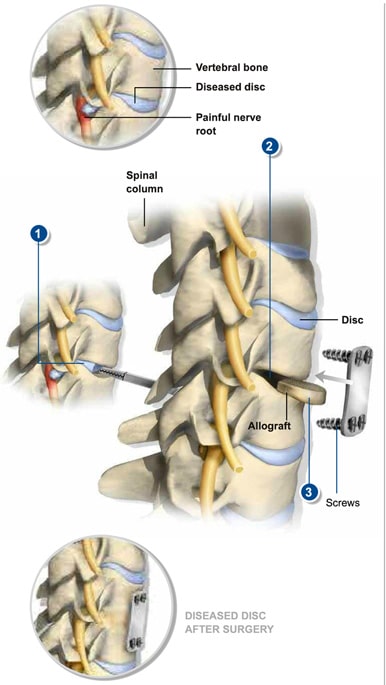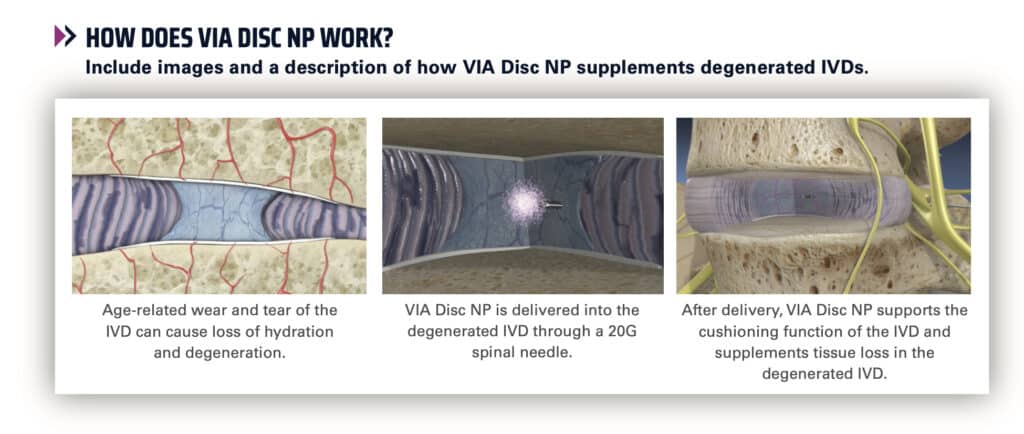Anterior Cervical Discectomy & Fusion
If you’re suffering from severe neck and back pain in South Carolina, the cause may be nerve compression, meaning your spinal nerves are being impinged in some way. If the condition exists in your neck, you may experience pain, numbness and weakness as well. An anterior cervical discectomy & fusion procedure can relieve your pain.
A herniated cervical disc is often the diagnosed condition that an anterior cervical discectomy & fusion addresses. There may be other reasons to seek this procedure, such as injuries and bone spurs.
A discectomy is the surgical removal of a damaged disc from your spine. This procedure often is performed with fusion surgery. The fusion helps stabilize the vertebrae and give you pain-free movement.
OVERVIEW
This spinal surgery removes a herniated or diseased disc from your spine. The procedure relieves any neck and radiating arm pain you may have experienced as symptoms when the damaged disc pressed on nerve roots. The procedure is detailed below. Ask your doctor about your risks and recovery expectations.
 1. CREATING THE INCISION
1. CREATING THE INCISION
Your surgeon starts this procedure by making an incision on the left or right side at the front of your neck. It can leave minimal surgical scarring.
2. REMOVING THE DISCS
After accessing your spine, the board-certified surgeon removes the diseased or damaged disc, as shown in illustration 1. Removing the disc immediately relieves the pressure on your pinched nerves, easing your pain.
3. INSERTING THE GRAFT
Your surgeon then clears the space above and below the removed disc to prepare it for a bone graft. The graft may be an allograft or an autograft bone. The surgeon places the graft between the vertebrae, as in illustration 2.
4. ATTACHING THE METAL PLATE
The surgeon may screw a small metal plate over the area to hold the bones in place while the vertebrae heal, as shown in illustration 3. In this procedure, the metal plate, if needed, will be permanent.
5. RECOVERING FROM THE PROCEDURE
During the healing period following surgery, the bone graft grows into the space, joining the vertebrae above and below to form a new stable mass. Most patients recover within four to six weeks, although it may take up to 18 months for the bones to fully set.
SURGICAL PROCEDURES

